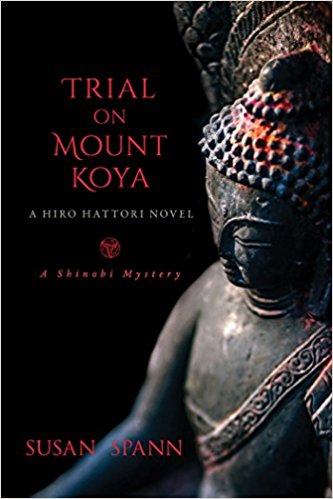 Trial on Mount Koya (Shinobi Mystery #6) by Susan Spann
Trial on Mount Koya (Shinobi Mystery #6) by Susan Spann Format: eARC
Source: supplied by publisher via Edelweiss
Formats available: paperback, ebook
Genres: historical mystery
Series: Shinobi Mysteries #6
Pages: 256
Published by Seventh Street Books on July 3, 2018
Purchasing Info: Author's Website, Publisher's Website, Amazon, Barnes & Noble, Kobo, Bookshop.org
Goodreads
Master ninja Hiro Hattori and Jesuit Father Mateo head up to Mount Koya, only to find themselves embroiled in yet another mystery, this time in a Shingon Buddhist temple atop one of Japan's most sacred peaks.
November, 1565: Master ninja Hiro Hattori and Portuguese Jesuit Father Mateo travel to a Buddhist temple at the summit of Mount Koya, carrying a secret message for an Iga spy posing as a priest on the sacred mountain. When a snowstorm strikes the peak, a killer begins murdering the temple's priests and posing them as Buddhist judges of the afterlife--the Kings of Hell. Hiro and Father Mateo must unravel the mystery before the remaining priests--including Father Mateo--become unwilling members of the killer's grisly council of the dead.
My Review:
One of the factors that makes historical mysteries so interesting is that the investigator, whoever they might be, is forced to rely on instinct and intelligence, as forensics as we know them today do not yet exist. At the same time, the investigator can’t let their instincts get too much in the way. To quote Will Rogers, who won’t be born for more than three centuries after Trial on Mount Koya takes place, “It isn’t what we don’t know that gives us trouble, it’s what we know that ain’t so.”
Shinobi (read ninja) Hiro Hattori is usually an excellent investigator. In his own society, mid-16th century Japan, he is an outsider on multiple levels. First he’s a master assassin. Second he’s the bodyguard and now friend of a Portuguese Jesuit priest. And third he is masquerading as a ronin, a masterless samurai. He’s normally on the outside looking in, even while appearing to be part of everything.
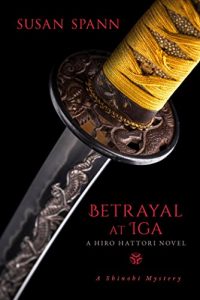 But in this particular case, while he is an outsider in this group of isolated people, he is unable to muster his usual clear-sighted lack of emotional involvement. He is still grieving the events of the the previous book, Betrayal at Iga, and his judgment is clouded because his friend is as threatened as everyone else in this remote killing ground.
But in this particular case, while he is an outsider in this group of isolated people, he is unable to muster his usual clear-sighted lack of emotional involvement. He is still grieving the events of the the previous book, Betrayal at Iga, and his judgment is clouded because his friend is as threatened as everyone else in this remote killing ground.
And having just lost his lover in a murder that he believes he should have prevented, he is afraid of losing his closest friend as well. As a consequence he is jumping at shadows, unable to see or admit that his clouded judgment is causing him to miss vital clues and suspect people who he should have eliminated from suspicion – if he were operating as his usual, rational self.
Normally, between the Jesuit Father Mateo and the shinobi Hiro Hattori, Hiro is the level-headed one while Mateo rushes in where his religion’s angels would certainly fear to tread. And while Mateo still serves as our “Watson” in this outing, being the outsider to whom Hiro must explain the ins and outs of their purpose and location, in this particular story he is much more clear-sighted than his friend.
This story is also a variation on one of the classic mystery tropes. A relatively small group of people is isolated by a blizzard in a remote location. No one can get in, and no one can get out. There is a murderer amongst them who turns out to be a serial killer. And he must be one of them, because he can’t escape and no one could be hiding on the mountainside in the fierce and freezing storm.
It is up to Hiro, with the assistance of Mateo, to first get his head out of his own ass, and then to figure out whodunit. The setting is a remote monastery, where someone is methodically murdering the monks. As Hiro puts it, the usual methods for murder are love, money and power. They are in a monastery, a Buddhist monastery. It seems as if those motives could not possibly apply.
But of course one of them does. It is up to Hiro to figure out how and why before his best friend becomes the next victim.
Escape Rating B: This series is absolutely fascinating, both for its characters and for this recreation of a marvelous world that seems both incredibly exotic and extremely familiar. Exotic because I have little knowledge of the place and period it covers. Familiar because in the end, the characters are so very human, in all their muck and glory.
Human beings are, at heart, the same all over. While what constitutes money and power may vary from one society to another, the lengths that humans will go to in order to achieve or steal them are all too similar.
And, as always, that love is all there is is all we know of love. But what Hiro to his surprise grasps on the one hand, he loses track of on the other. Eros is not the only form of love. A strong enough version of any form of love could be a motive for murder.
Or the killer could simply be barking mad. Or both.
In its remote setting and isolated group of religious observers, Trial on Mount Koya reminds me just a bit of The Beautiful Mystery by Louise Penny. With one major difference. At the end of The Beautiful Mystery, while I certainly felt for the victims, I also understood why the particular events, the murders, happened. When completed, the story felt finished and I felt satisfied that all had been resolved, good had, if not triumphed in that particular case, at least lived to fight another day.
As much as I enjoyed Trial on Mount Koya, the deep dive back into Hiro and Mateo’s world, and the progress of the investigation, as well as learning more about 16th century Japan and its culture, the revelation of the killer and his reasons felt unsatisfactory. This is possibly because the killer was both utterly insane and completely organized at the same time. It may have been because his logic and his motives were so far outside my own perspectives that I just couldn’t understand them enough.
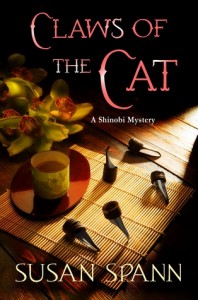 And it could be that there is more yet to discover, not about this killer in particular but about the outside events that set Hiro and Mateo on this particular journey in the first place. I’ve enjoyed every one of their adventures from the series’ beginning in Claws of the Cat, and if you love historical mysteries I highly recommend starting this series at the beginning.
And it could be that there is more yet to discover, not about this killer in particular but about the outside events that set Hiro and Mateo on this particular journey in the first place. I’ve enjoyed every one of their adventures from the series’ beginning in Claws of the Cat, and if you love historical mysteries I highly recommend starting this series at the beginning.
I’ll be back to follow them on their journey. They are intending to take the road to Edo. I’m sure they’ll have more fascinating adventures along the way. And probably turn up a dead body, or two, or six.
~~~~~~ GIVEAWAY ~~~~~~
I am very happy to be giving away a copy of Trial on Mount Koya to one lucky US or Canadian commenter.


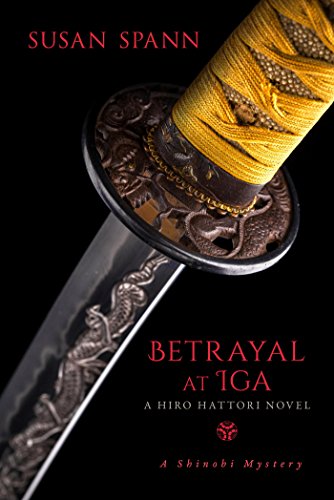 Betrayal at Iga (Shinobi Mystery #5) by
Betrayal at Iga (Shinobi Mystery #5) by 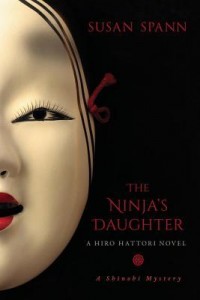 From the very beginning of this series, all the way back in the marvelous
From the very beginning of this series, all the way back in the marvelous 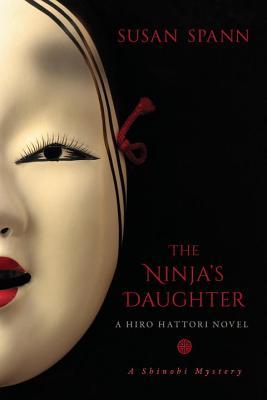 The Ninja's Daughter (Shinobi Mystery, #4) by
The Ninja's Daughter (Shinobi Mystery, #4) by 